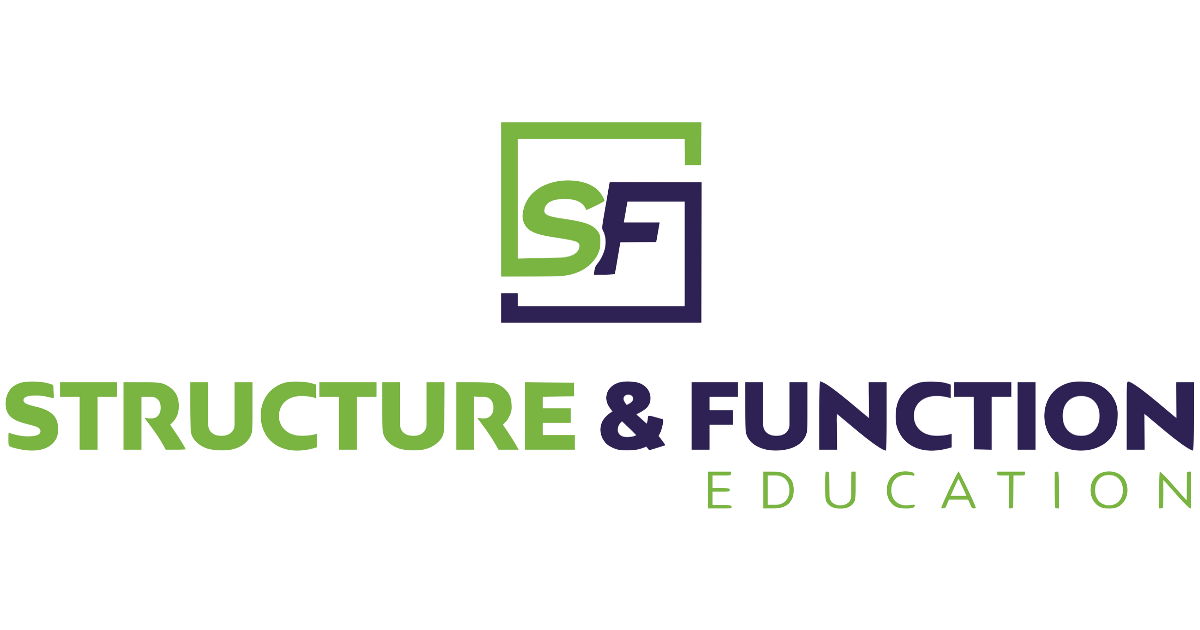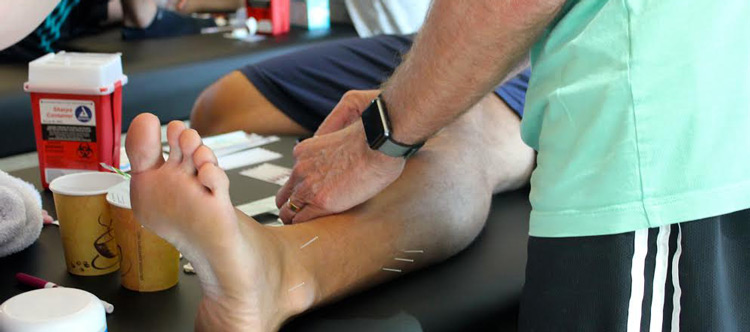What are the top 6 mistakes clinicians make when using dry needling?
Dry needling has emerged as a common technique within the realm of musculoskeletal treatment; however, its safe and effective application necessitates meticulous clinical reasoning, precise anatomical knowledge, and strict adherence to safety protocols. Healthcare professionals often encounter errors in interconnected domains, including inadequate patient screening, anatomical misjudgments, flawed decision-making processes, overuse of the technique, errors in methodology and dosage, and insufficient training. This discourse, centered on treatment, systematically examines prevalent errors, elucidates their potential consequences, and offers evidence-based strategies to prevent or remedy these mistakes.
Top 6 Mistakes Clinicians Make When Using Dry Needling: (Brian’s List)
- Failure to Integrate Comprehensive Screening and Differential Diagnosis
- Anatomical Inaccuracies and Misidentification of Landmarks
- Decision-Making Pitfalls: Excessive Utilization of Dry Needling
- Technique and Dosage Errors
- Deficiencies in Training and Violations of Safety Protocols
- Insufficient Informed Consent and Patient Education
Failure to Integrate Comprehensive Screening and Differential Diagnosis:
Clinicians may overly rely on trigger point palpation as the sole criterion for treatment, thereby neglecting a comprehensive diagnostic assessment. A compelling commentary emphasizes that dry needling should not be solely based on palpation findings; instead, clinicians are advised to incorporate a systems-based medical model, which includes evaluating comorbidities or conditions that may mimic musculoskeletal pain, such as autoimmune diseases or visceral pathologies. Failure to recognize conditions like ulcerative colitis, Crohn’s disease, gallbladder or renal issues, endocrine abnormalities, or inflammatory autoimmune exacerbations can result in misdiagnosis or adverse outcomes, as these conditions may manifest as myalgia needling.1-2
The consequences of such negligence encompass the exacerbation of systemic disease, infection, hematoma, or delays in referral to suitable medical care. The recommended safeguard is a comprehensive screening framework rather than superficial exclusion criteria: an extensive history, systems review, and meticulous evaluation of tissue integrity, hemostatic status, immunologic condition, and medication interactions (e.g., anticoagulants, immunosuppressants, statins that induce myalgia). 1-2
Anatomical Inaccuracies and Misidentification of Landmarks
Anatomical inaccuracies represent another persistent error. Surveys suggest that professionals with limited training hours or insufficient experience are more likely to report adverse events, including bent needles or accidental puncture of non-target tissues.3-4 Accurate comprehension of cross-sectional anatomy is crucial for performing needle procedures in regions such as the thorax or quadratus femoris, where intrapelvic or thoracic organs may be at risk. A validated methodology focused on the quadratus femoris demonstrated only moderate accuracy and underscored the clinical significance of associated risks, thereby emphasizing the importance of anatomical precision and the potential need for supplementary tools, such as ultrasound guidance.5
The immediate potential repercussions of improperly positioned needles include pneumothorax, nerve injury, epidural hematoma, or vascular injury.6-8 Even “minor” misplacements may cause significant patient discomfort. Preventing these outcomes depends on:
- A comprehensive three-dimensional examination of relevant anatomy
- The use of landmarks and “bracketing techniques,” where a bony structure serves as a reliable depth reference during thoracic needling
- Proficiency in needle angulation, depth, and tissue layer navigation, reinforced through continuous anatomical review and, when feasible, ultrasound guidance
Decision-Making Pitfalls: Excessive Utilization of Dry Needling
A prevalent misconception in clinical practice is the frequent overapplication of dry needling as a standard intervention, often utilized in nearly every session, irrespective of the patient’s condition or stage of recovery. This issue arises from a convergence of professional confidence, perceived patient demand, and the immediate analgesic benefits that needling can provide. However, dependence on dry needling as the primary or sole treatment may obscure other evidence-based interventions that are vital for achieving sustainable functional outcomes, including graded exercise, load management, and motor control retraining.
While literature suggests that dry needling provides short-term pain modulation and increased pressure pain thresholds, systematic reviews caution that the benefits are limited, context-dependent, and most effective when integrated into a multimodal care strategy rather than used as a standalone or repetitive treatment method.9-10 Overreliance on passive treatment without progressing to active rehabilitation can create dependency, impede tissue adaptability, and lead to patient misconceptions that passive care alone can resolve complex neuromusculoskeletal problems.
Moreover, repeated needling in the same anatomical area may increase the likelihood of cumulative undesirable effects, including chronic post-needling discomfort, ecchymosis, or regional tissue irritation. While these reactions are typically modest, frequent needless needling exacerbates patient suffering without commensurate therapeutic benefit. 3,11 In high-risk populations—individuals on anticoagulants or with impaired tissue integrity—the risks intensify, as repeated insertions may increase the likelihood of hematoma formation or microvascular damage.3,6-8,12
Finally, the justification for needling should be well-founded and rooted in an understanding of the physiological outcomes of the proposed treatment. I frequently encounter discussions where a clinician’s rationale for needling interventions is solely that other methods have been unsuccessful. This constitutes a weak rationale and often results in needling conditions where dry needling may be either inappropriate or contraindicated.
Strategies grounded in evidence to avert these encompass:
- Defining explicit treatment goals: Determine whether the aim is to achieve immediate analgesia to facilitate aggressive loading or to address ongoing myofascial dysfunction within a structured program.
- Implementing multimodal interventions: Integrate needling with exercise, education, and manual treatment modalities to produce lasting changes.
- Executing dosage regulation: Limit the frequency and duration of dry needling to what is necessary for functional progress, and discontinue treatment once objectives are met.
- Patient instruction: Clarify that dry needling functions as an adjunctive therapy rather than a definitive cure, and highlight the importance of self-management measures.
By redefining dry needling as a component—not the foundation—of treatment, clinicians can avoid the pitfalls of procedural overuse and maintain adherence to evidence-based, patient-centered care.
Technique and Dosage Errors in Dry Needling Treatment
Pitfalls associated with technique and dosage constitute another category of errors. Although the “fast-in-and-fast-out” technique is prevalent, the literature remains ambiguous concerning optimal dosing, manipulation, and frequency.3,9 Excessive pistoning, multiple needle insertions, or aggressive treatment of multiple sites without proper calibration to patient risk may result in increased soreness, bruising, or adverse events. Clinicians are advised to tailor the dose and technique to each patient’s specific circumstances and status:
- Low-risk patients and regions may tolerate more aggressive entry
- High-risk patients (eg, on anticoagulants, immunocompromised, diabetic microangiopathy) warrant gentler approaches: fewer needles, minimal manipulation, shallower depth.13
Adverse events such as bruising (7.6%), bleeding (4.7%), pain during treatment (3.0%), and post-treatment soreness (2.2%) are not rare in prospective studies, even among physiotherapists.6 Basic recommendations include informing patients about expected transient soreness and minor bleeding, employing a firm yet gentle technique, applying pressure post-needle removal, and monitoring outcomes closely.13
Deficiencies in Training and Violations of Safety Protocols in Dry Needling
Safety violations frequently originate from deficiencies in training and unwarranted overconfidence. Surveys indicate that numerous clinicians possess only 21 to 60 hours of dry-needling instruction, with minimal emphasis on anatomy, safety protocols, decision-making processes, or imaging techniques. Over time, practitioners with less training report a higher incidence of adverse events. A focused discussion emphasizes that clinical competency should include not only palpation and trigger point procedures but also comprehensive patient reasoning, systems screening, and technological proficiency.13
Clinicians should partake in extensive progressive training encompassing:
- In-depth anatomical modules (cadaveric or ultrasound-guided)
- Safety case studies highlighting adverse events
- Decision-making algorithms for risk assessment
- Structured oversight and supervised practice
- Continuing education initiatives that incorporate emerging evidence
Over-Reliance on Trigger Point Palpation in Dry Needling
A common error involves over-reliance on trigger point localization. Traditional definitions associate dry needling primarily with intramuscular trigger point therapy. However, contemporary literature endorses a broader perspective, indicating that needling connective tissues, peri-neural structures, and non-trigger point sites can also yield significant clinical results. 2,11,13-14 Evidence shows that the identification of trigger sites through palpation suffers from inadequate inter-examiner reliability, and robust data supporting the efficacy of solely intramuscular trigger point needling for long-term outcomes remains lacking.14 Conversely, needling of connective tissues, tendons, or neural structures may induce microvascular, chemical, neurological, and central responses, including increased blood flow, collagen proliferation, beta-endorphin release, and activation of descending inhibitory pain pathways.9,14
These phenomena challenge narrow frameworks and require careful consideration of trigger points. This misrepresentation results in a lack of recognition for advantageous distal or non-local impacts. For example, distal needling (e.g., of the gastrocnemius) can manage pain via systemic mechanisms.9,14 Likewise, needling a single location can deactivate latent trigger points in other areas of the kinetic chain. Identifying these paradigms allows practitioners to develop more strategic, comprehensive needling strategies instead of employing “search-and-destroy” localized myofascial therapies 14
Insufficient Informed Consent and Patient Education in Dry Needling
A persistent deficiency is the inadequate emphasis on informed consent and patient education. A 2024 physical therapy study indicated a consensus that informed consent for dry needling should encompass neurological signals, syncope, discomfort, pneumothorax, bruising, hemorrhage, nausea, and symptom worsening. Focusing solely on the mechanical or musculoskeletal justification overlooks patient expectations and the transmission of risks.15
Clinically, inadequate expectation management may generate suspicion or grievances when benign discomfort occurs. In contrast, well-structured discussions alleviate anxiety and enhance collaborative decision-making. A suggested methodology entails:
- Articulating both verbally and in writing the typical, minor reactions (e.g., discomfort, bruising), as well as infrequent but severe occurrences (e.g., pneumothorax), and securing explicit recorded consent
- Promptly soliciting patient input post-treatment to detect any unfavorable indications
Summary Table: Top 6 Mistakes Clinicians Make When Using Dry Needling
| Domain | Common Clinical Mistake | Potential Consequences | Evidence-Based Remedy |
| Screening & Differential | Relying on palpation alone; ignoring systemic red flags | Missed diagnosis; systemic adverse events | Medical-model screening, comorbidity flagging, referral |
| Anatomical Inaccuracy | Poor depth control; misidentifying landmarks | Pneumothorax; nerve or vascular injury | Anatomical study, bracketing techniques, optional US guidance |
| Overuse of Dry Needling | Applying needling at every session without indication | Dependency, delayed rehab, increased minor AEs | Clear objectives; multimodal care; dose control, and education |
| Technique & Dosage Overreach | Aggressive needling; multiple insertions | Increased soreness, bleeding, hematoma | Individualized dosage; gentler techniques for high risk |
| Training Deficits | Inadequate anatomical or safety education | Higher AE rates; clinician uncertainty | Extended, mentored training; anatomy refreshers |
| Narrow Targeting Paradigm | Exclusive focus on intramuscular trigger points | Underutilization of effective non-local/connective targets | Broader definition of target; understanding analgesic pathways |
| Informed Consent Lapses | Omitting Sx explanations and risk discussion | Patient dissatisfaction or legal risk | Comprehensive consent, including minor and serious AEs |
Closing Perspective
In every domain, the common theme of avoidance is evident in organized education, critical self-reflection, and evidence-based behavior. When performed with accuracy, dry needling is a safe, minimally invasive, and effective remedy. Prospective data indicate that adverse events are generally minor—such as discomfort, bruising, and mild pain—while severe occurrences are few.3,6-8 Safe practice necessitates that clinicians integrate technical proficiency with thorough clinical reasoning.
To improve patient outcomes and bolster professional confidence, clinicians ought to implement the following evidence-based strategies:
- Broaden screening to encompass systemic pathologies in addition to musculoskeletal indicators
- Reinforce dedication to anatomical precision through cadaver and ultrasound education, employing bracketing techniques
- Customize needling methods and dosages according to each patient’s risk profile, opting for gentler alternatives when appropriate
- Provide informed consent that effectively conveys common minor effects and infrequent
- Commit to extensive training under mentorship, including anatomy refreshers and continuous education
- Adopt wider therapeutic targets (neural, connective, non-local) when clinical reasoning justifies such an approach
By addressing these common mistakes through structured, evidence-guided responses, clinicians can elevate the safety and efficacy of dry needling, nurturing it as a precise, patient-centered modality in musculoskeletal care. If you’re interested in learning how Structure & Function Education’s® Pentamodal Method of dry needling can help you treat your patients, enroll today in Foundations in Dry Needling for Orthopedic Rehab & Sports Performance.
References
- Valera-Calero JA, Plaza-Manzano G, Rabanal-Rodríguez G, Díaz-Arribas MJ, Kobylarz MD, Buffet-García J, Fernández-de-Las-Peñas C, Navarro-Santana MJ. Current State of Dry Needling Practices: A Comprehensive Analysis on Use, Training, and Safety. Medicina (Kaunas). 2024 Nov 14;60(11):1869. doi:10.3390/medicina60111869. PMID: 39597054; PMCID: PMC11596814.
- Kearns, Gary, César Fernández-De-Las-Peñas, Jean-Michel Brismée, Josué Gan, and Jacqueline Doidge. “New Perspectives on Dry Needling Following a Medical Model: Are We Screening Our Patients Sufficiently?” Journal of Manual & Manipulative Therapy 27, no. 3 https://doi.org/10.1080/10669817.2019.1567011.
- Brady, Sarah, Johnson McEvoy, Jan Dommerholt, and Catherine Doody. “Adverse Events Following Trigger Point Dry Needling: A Prospective Survey of Chartered Physiotherapists.” Journal of Manual & Manipulative Therapy 22, no. 3 (2014): 134–40. https://doi.org/10.1179/2042618613Y.0000000044.
- Valera-Calero, Juan Antonio, Gustavo Plaza-Manzano, Gabriel Rabanal-Rodríguez, et al. “Current State of Dry Needling Practices: A Comprehensive Analysis on Use, Training, and Safety.” Medicina 60, no. 11 (2024): 1869. https://doi.org/10.3390/medicina60111869.
- Sánchez-Montoya, Marta, Jaime Almazán-Polo, Néstor Vallecillo Hernández, et al. “Safety and Anatomical Accuracy of Dry Needling of the Quadratus Femoris Muscle: A Cadaveric Study.” Healthcare 13, no. 15 (2025): 1828. https://doi.org/10.3390/healthcare13151828.
- Boyce, David, Hannah Wempe, Courtney Campbell, et al. “ADVERSE EVENTS ASSOCIATED WITH THERAPEUTIC DRY NEEDLING.” International Journal of Sports Physical Therapy 15, no. 1 (2020): 103–13. https://doi.org/10.26603/ijspt20200103.
- Halle, John S., and Rob J. Halle. “PERTINENT DRY NEEDLING CONSIDERATIONS FOR MINIMIZING ADVERSE EFFECTS – PART ONE.” International Journal of Sports Physical Therapy 11, no. 4 (2016): 651–62.
- Halle, John S., and Rob J. Halle. “PERTINENT DRY NEEDLING CONSIDERATIONS FOR MINIMIZING ADVERSE EFFECTS – PART TWO.” International Journal of Sports Physical Therapy 11, no. 5 (2016): 810–19.
- Butts, Raymond, and James Dunning. “Peripheral and Spinal Mechanisms of Pain and Dry Needling Mediated Analgesia: A Clinical Resource Guide for Health Care Professionals.” International Journal of Physical Medicine & Rehabilitation 04, no. 02 (2016). https://doi.org/10.4172/2329-9096.1000327.
- Pavlović, Bojan, Lazar Toskić, Vanja Cicović, Borislav Cicović, and Veroljub Stanković. “The Effects of Dry-Needling Therapy on the Quality of Life in Athletes with Myofascial Pain Syndrome: Repeated Measures Design Study.” Journal of Clinical Medicine 13, no. 17 (2024): 4969. https://doi.org/10.3390/jcm13174969.
- McAphee, Darius, Michael Bagwell, and Sue Falsone. “Dry Needling: A Clinical Commentary.” International Journal of Sports Physical Therapy 17, no. 4 (2022). https://doi.org/10.26603/001c.35693.
- McCulloch, Michael, Arian Nachat, Jonathan Schwartz, Vicki Casella-Gordon, and Joseph Cook. “Acupuncture Safety in Patients Receiving Anticoagulants: A Systematic Review.” The Permanente Journal 19, no. 1 (2015): 68–73. https://doi.org/10.7812/TPP/14-057.
- Valera-Calero, Juan Antonio, Gustavo Plaza-Manzano, Gabriel Rabanal-Rodríguez, et al. “Current State of Dry Needling Practices: A Comprehensive Analysis on Use, Training, and Safety.” Medicina 60, no. 11 (2024): 1869. https://doi.org/10.3390/medicina60111869.
- Dunning, James, Raymond Butts, Firas Mourad, Ian Young, Sean Flannagan, and Thomas Perreault. “Dry Needling: A Literature Review with Implications for Clinical Practice Guidelines.” Physical Therapy Reviews 19, no. 4 (2014): 252–65. https://doi.org/10.1179/108331913X13844245102034.
- Ickert, Edmund C, David Griswold, Ken Learman, and Chad Cook. “Identifying Which Adverse Events Associated with Dry Needling Should Be Included for Informed Consent: A Modified e-Delphi Study.” Physiotherapy Theory and Practice, May 9, 2023, 1–13. https://doi.org/10.1080/09593985.2023.2208668.
- Item 2




